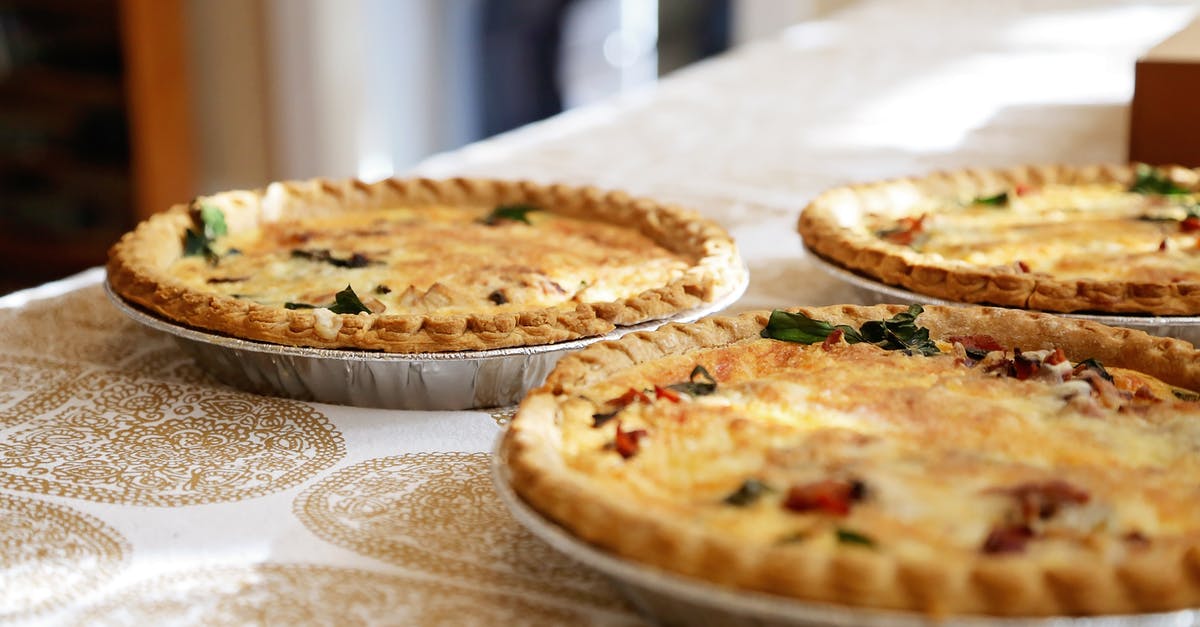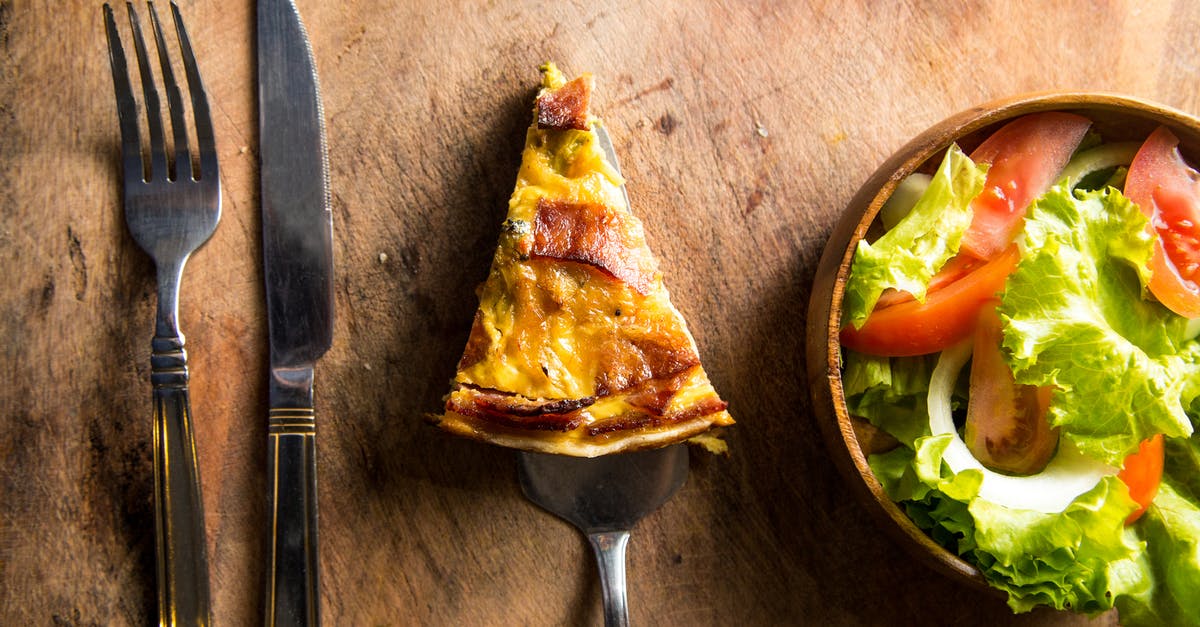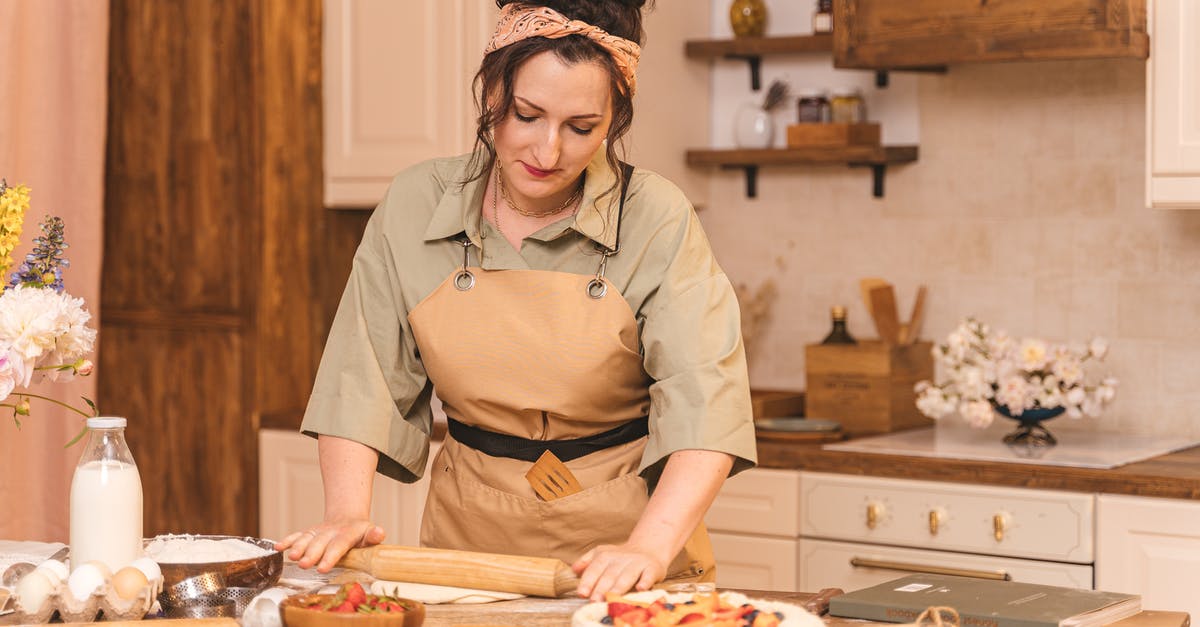Making a decent pie crust?

I have tried many pie crust recipes, it either sticks to the cutting board or rolling pin. I've even tried wax paper or plastic wrap with a generous amount of flour and it still sticks. If I'm lucky enough and it doesn't stick, it breaks up when transferring to the pan. What am I doing wrong?
Best Answer
Sticking could be because the dough is either too warm or too wet. So it's possible you're not letting it chill fully. It's also possible the dough's too wet because you added too much water in order to get it to come together. I suppose it's also possible that your definition of a generous amount of flour isn't actually very generous, and you're letting either the surface or the rolling pin get sticky, but that seems less likely.
If it breaks in a crumbly way when transferring, it's probably too dry. That could happen if you add too little water, or perhaps if you let the ingredients get too warm while you're mixing it up, so it seems to come together thanks to the fat melting, but then once chilled it's too dry and ends up crumbly. If it's just tearing easily, you could be rolling it too thin, or even just letting it hang under its own weight too much.
So it's hard to tell you exactly what you've done wrong, and it could well have been different things each time. It's even possible that some of the recipes you used were actually bad. For what it's worth, this recipe has worked reliably for me. If the recipes you've used are significantly different in any way, that could've been the problem. (It calls for a food processor, but even doing my best imitation with a pastry blender it's always worked well.)
Beyond that, all I can really do is try and give some generic advice:
Check your measurements. Consider using a scale for the flour for more precision.
When mixing flour and butter, make sure the butter is well-chilled and work quickly. Use a pastry blender, or a food processor if you have one, so that your hands aren't adding heat. If the room's warm, be extra careful about this (or crank up the AC, or do this at a cool time of day instead).
Add only enough water to make the dough come together. The amount in the recipe should be pretty close, but sometimes there's a range. If you have to really force it all together and it's threatening to crumble, you probably have too little. If it comes together really easy, without having to push it into a ball at all, you probably have too much.
Chill the dough thoroughly before rolling. You probably need at least a couple hours in your fridge, but you can be extra sure by giving it several hours or even overnight.
Work reasonably quickly when rolling it out. Especially if the room is warm, taking a long time to roll the dough lets it heat up too much, so it'll get sticky. (Again, AC or cool time of day if possible.)
Make sure to roll somewhere close to a circle. It doesn't have to be perfect, but if you're way off, you'll have to roll it too thin in order to make it big enough to fit your pan.
Make sure you really are using enough flour. You don't want it bathed in flour, but you do need to get a thin layer across everything, and it's fine to add more if it starts to stick. You shouldn't need any tricks with wax paper or plastic wrap; a decent amount of flour on the work surface and rolling pin will do just fine. It can be hard to dust evenly enough, so if you notice it's patchy, rub it around to make sure things get covered. (You can swirl the disk of dough around in the flour before starting, then flip it over and repeat. When you add flour on the rolling pin you can rub it around with your hand.)
When transferring the dough, be sure you're lifting it securely. Get both hands under it (shouldn't be hard if it's floured). You can also roll things out on a flimsy plastic cutting board and just slide them off into the pie dish. (That's especially useful for lattice tops.)
Pictures about "Making a decent pie crust?"



What is a trick to making a good pie crust?
10 Tips for Making Perfect Pie CrustHow does Gordon Ramsay make pie crust?
Because butter has a higher melting point, it also melts nicely in your mouth. The milkfats present in the butter also allow the crust to brown more than shortening, lard, or oil-based versions. Oil: Oil has one major benefit -- as a fat in liquid form, it can't be melted and is easy to incorporate into dough.Is butter or oil better for pie crust?
Adding vinegar helps to tenderize the crust and also inhibits gluten development, keeping your dough soft. You need just a bit of this and don't worry\u2026you won't taste it once the pie is baked.How to Make Pie Crust From Scratch
Sources: Stack Exchange - This article follows the attribution requirements of Stack Exchange and is licensed under CC BY-SA 3.0.
Images: Cats Coming, Amanda Reed, Malidate Van, ANTONI SHKRABA production
